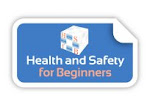Common sense is a term used by tabloids, politicians and lazy managers to mean that you don’t need to explain the risks associated with something because it’s common sense and therefor everyone already understands if something should be done, how something should be done, precautions that should be taken.
Common Sense Common Safety
Common sense is a term used by tabloids, politicians and lazy managers to mean that you don’t need to explain the risks associated with something because it’s common sense and therefor everyone already understands if something should be done, how something should be done, precautions that should be taken.
For example most people would consider it common sense not to inhale poisonous fumes in the knowledge that it could give them cancer and other adverse health effects…. but people still smoke tobacco which they take from packets which state in large type “Smoking Kills”, so that particular sense is not common to them.
Another example:- most drivers of vehicles would agree that driving across a level crossing when the barriers are down is not a sensible thing to do, but people do drive and walk across closed level crossings frequently (as evidenced by the transport police report on the subject).
Workplace examples showing that common sense does not in fact exist can be seen by looking at the prosecutions database on the HSE website, where you can see that people go on fragile roofs with no precautions, work in excavations that are not supported, access elevated positions using unsafe structures and equipment, walk behind reversing vehicles, etc.
Cultures are diverse,and this leads to different perceptions of what is an acceptable risk to safety or health.
For example it was considered acceptable to a factory in china that people making popular IT devices were regularly jumping from the roof of the building It took a whisleblower publically telling the CEO of the American company who sell these devices about it to get something done about it… in UK one such suicide would have been all over the news and something would have been done immediately.
The culture in china is very different from the culture in the UK. The cultures in East European countries, India, Pakistan, Brazil, and Middle Eastern countries are all very distinct from each other with regard to the value of human life and shown by the level of protection at work and the level of risk which is considered acceptable. People from these different cultures bring their own values with them when they come to the UK to work, so there is little commonality to be found in their perception of risk and their willingness to work within a UK regulatory regime, which makes work in this field much more challenging and interesting, one of the reasons I enjoy it so much.
Because of the evidence I am faced with I have concluded that the term Common Sense means radically different things to different people based on their age, past experience, training, and cultural background.
If the meaning of a term is not standard and clear, then it is at best unreliable and probably counterproductive to use it to convey any meaningful information, so you’ll never find me using the term Common Sense except to discourage its use by people who are trying to convey an important and clear message.
Sense is not a measurable thing, there is no scale we can use to determine how much of it an individual has, it cannot be relied upon to control behaviour (as evidenced by the examples above) and to assume that some standard amount of sense is somehow common to all people is obviously a preposterous proposition.
Where someone can be injured or their health damaged, it is clear that some subjective arbritary value of sense cannot be relied upon to prevent that person being harmed.
If there is a significant risk, only planning and competence can be relied upon to provide individual protection. To rely on common sense instead is to rely on a fictional thing, and no protection at all.
I am however very happy for journalists, and politicians to go about their lives without any control over their safety except their own common sense, since that would thin out the population of these people to a lower and more acceptable level, and perhaps encourage them to stop slagging the people who currently work to keep working people safe.

